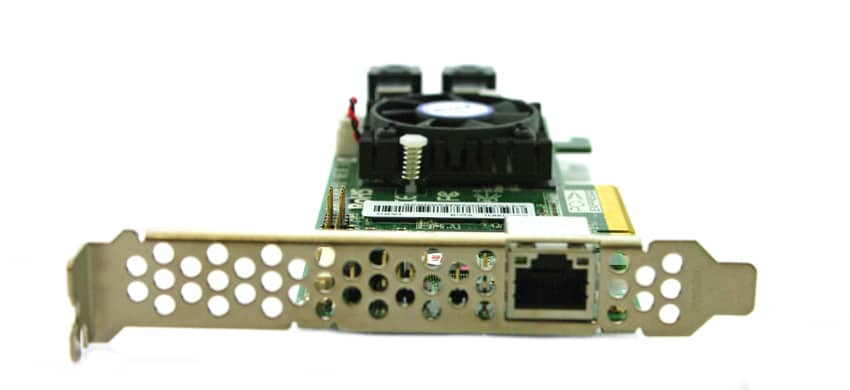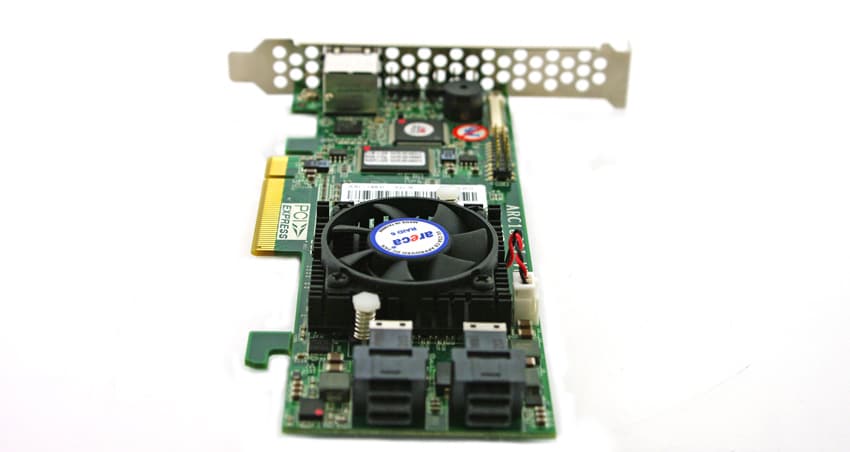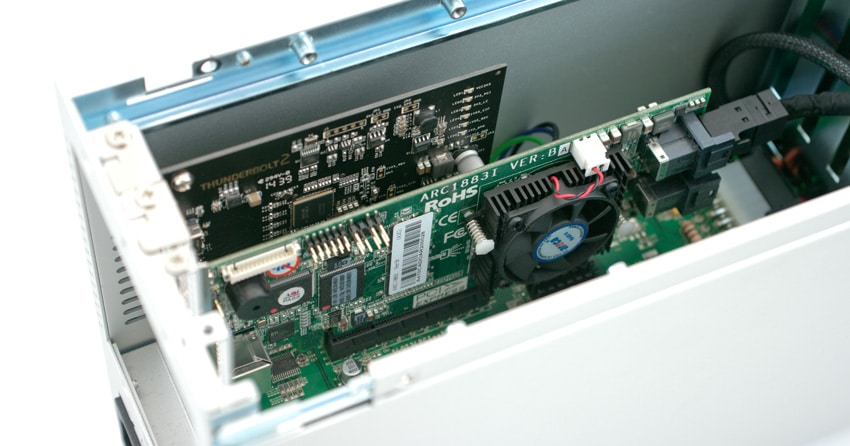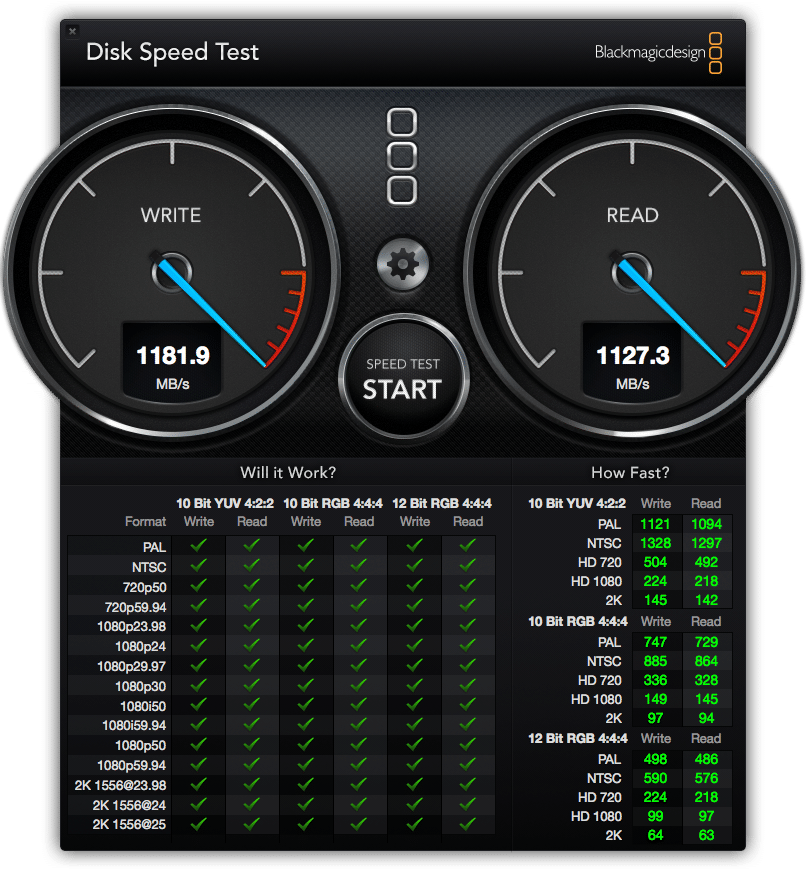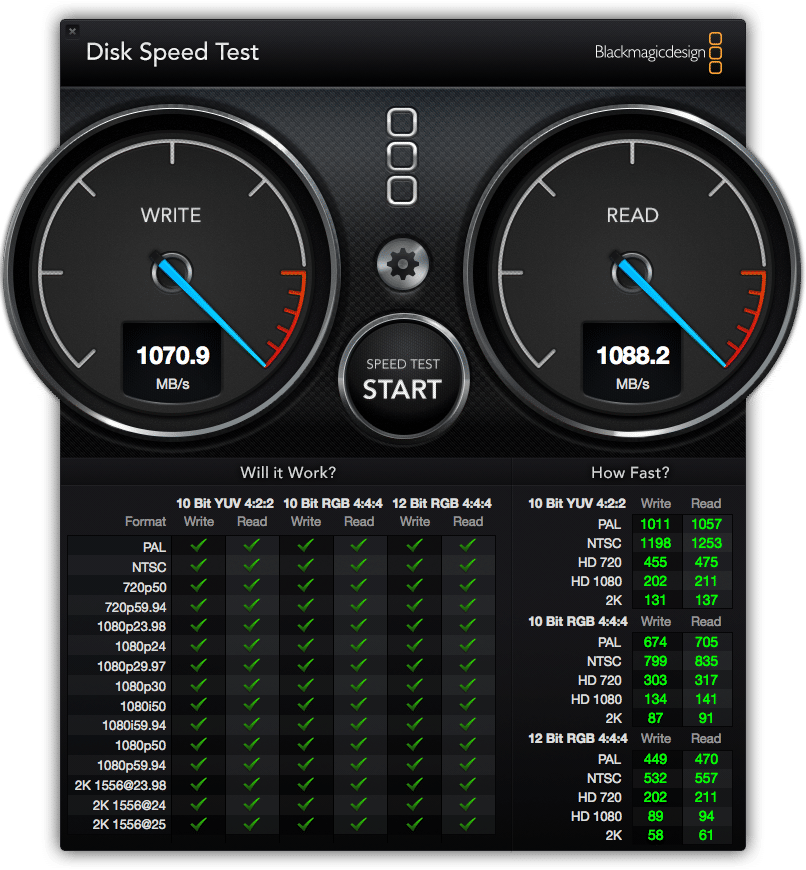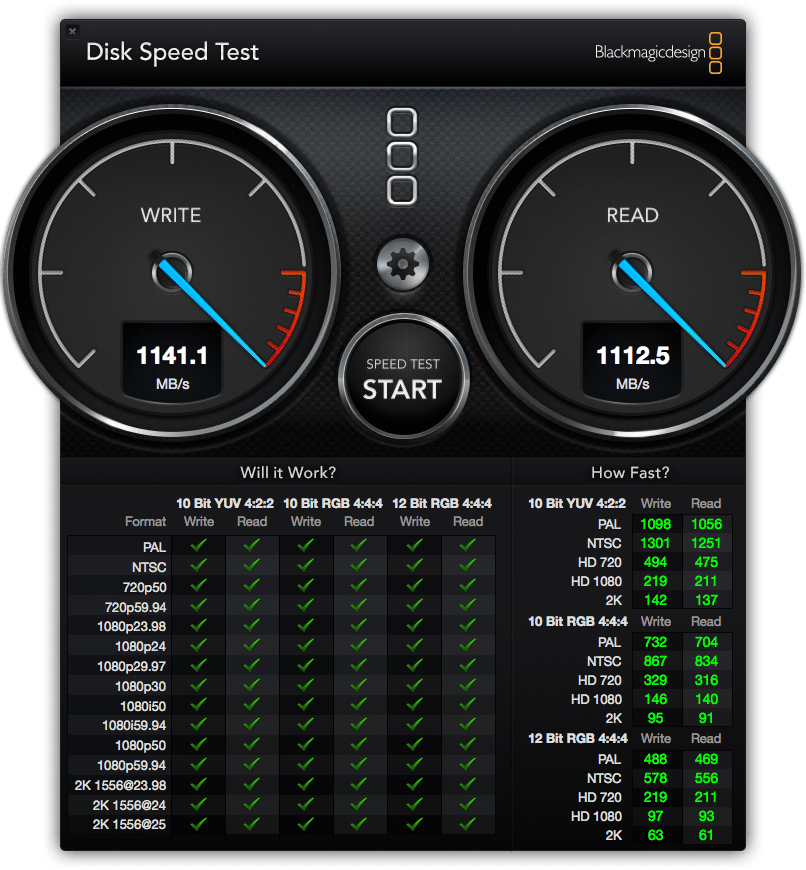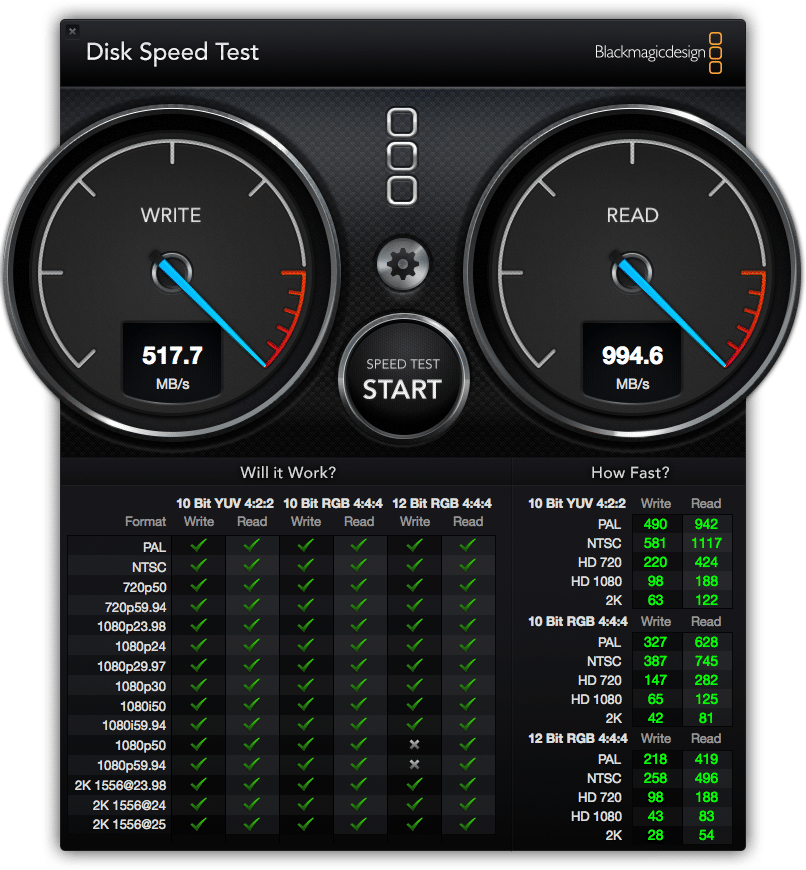
The Areca ARC-1883i and ARC-1883x are 12GB/s RAID controllers optimized for internal and external use, respectively. They feature the same transfer rate and PCLe 3.0 host interface as the previously reviewed LSI MegaRAID SAS3 9361-9i, but are geared more towards a workstation user rather than a server environment. This strengthens their appeal to creative contractors, like video or image editors, in need of very fast data transfer. Another key feature of this drive vs. others in its class is that it is compatible with Mac OS operating systems, which are commonly used by graphic designers and video editors.
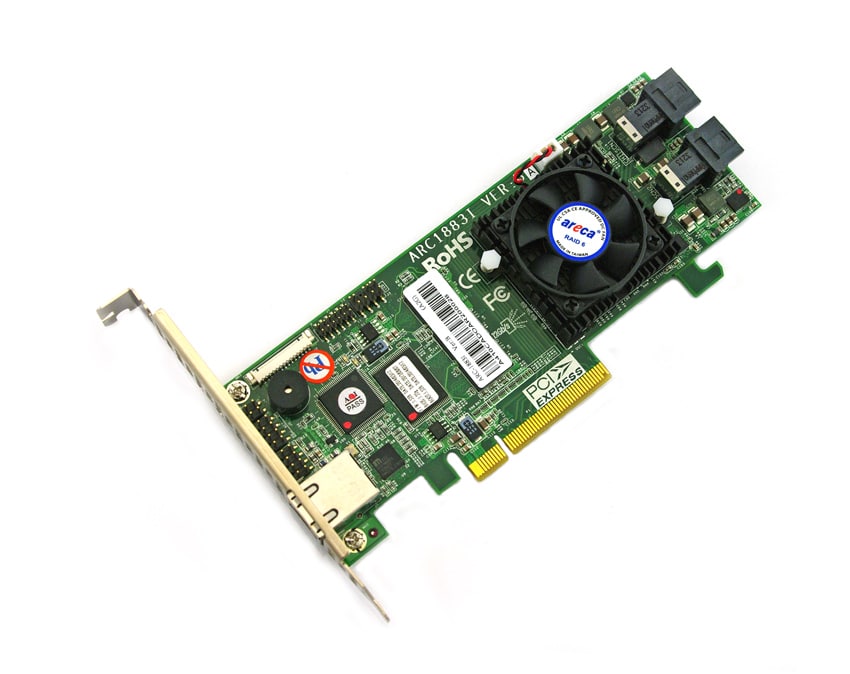
The release of the ARC-1883 controllers represents a jump from 2nd-gen SAS cards to 3rd-gen SAS cards. The previous models of the cards we are reviewing, the ARC-1882 line, featured 2nd-gen SAS cards with 6GB/s transfer rates. The new generation features doubled transfer rate, doubled on-board DRAM (2GB on the new models), and a 66.6% faster RAID-on processor (1.2GHz vs. 800MHz in the ARC-1882 line).
The ARC-1883i and ARC-1883x carry a 3-year warranty and street prices of $599.99 and $799.99, respectively.
Specifications
- Order Part Number:
- RAID Levels: 0, 1, 10, 3, 5, 6, 30, 50, 60
- Form Factor:
- Low Profile
- 169.5 x 64.4 mm (LxH)
- Ports: 4/8 internal or 4/8 external
- Connectors: 2 x SFF-8643 and 2 x SFF-8644 (1883i and 1883x, respectively)
- Bus Interface: x8 PCIe 3.0
- Processor: Dual Core RAID-on-Chip 1.2 GHz
- Cache: 2GB on-board DDR3-1866 SDRAM
- Operating Temperature: 5 to 60 °C
- Operating Voltage: 12V
- OS Support: Microsoft Windows 8/Server 2012/7/2008/Vista/Server 2003/XP, Linux, FreeBSD, VMware, Solaris 10/11 x86/x86_64, Max OS X 10.4.x/10.5.x/10.6.x/10.7.x/10.8.x/10.9.x
- Warranty: 3 years
Design and Build
Both the ARC 1883i and ARC 1883x exhibit LAN ports on the accessible port of the controller (for software management), though the 1883x additionally has two mini-SAS HD ports (whereas these are located near the rear of the 1883i). The LAN port can also be used to configure the controller through the McRAID storage manager. McRAID storage manager also allows the user to manage the controller over the internet through the LAN interface.
An optional battery back up module can be installed on the controller, protecting the data stored in DRAM in the event of a loss of power.
Both also feature fan-mounted heat sinks to effectively distribute excess heat in a workstation environment. This is one of the differentiating features of a workstation RAID controller vs. a server RAID controller.
Performance
To demonstrate the performance of the ARC RAID controller, we will look at the Netstor TurboBox Thunderbolt 2, which leveraged the ARC-1883i in one of its PCIe slots. Back in April of this year, we upgraded the TurboBox to Thunderbolt 2 from Thunderbolt 1 technology, and the ARC-1883i was used as the RAID controller to complete it.
As such, the Netstor TurboBox is equipped with HGST Ultrastar SSD1000MR SSDs in RAID0, RAID5, RAID10 and single drive configurations. We used a Blackmagic Disk Speed Test with a 5GB test file.
Leveraging the ARC-1883i controller configured in RAID0 showed a very impressive 1,181.9MB/s write and 1,127.3MB/s read, which was more than double the write speed when compared to a Thunderbolt 1 connection. When the ARC-1883i used a RAID5 and RAID10 configuration, the TurboBox continued its blistering performance with 1,088.2MB/s read and 1,070.9MB/s write and 1,112.5MB/s read and 1,141MB/s write, respectively. The single drive set up slowed down a tad, measuring 994.6MB/s read and 517.7MB/s write.
It should be noted that the above performance recorded from the ARC-1883i doesn’t really show its true potential. It would obviously yield much higher performance data when used within a server or workstation environment. We are applying these specific results to measure the ARC controller’s performance simply because this is how we are currently using it at StorageReview.
Conclusion
Specifically designed more workstation user environments, the Areca ARC-1883i and ARC-1883x are 12GB/s RAID controllers 3rd-generation SAS cards that use the PCLe 3.0 host interface. The new generation of controllers both double the transfer rate and on-board DRAM as well as a 66.6% increase in the RAID-on processor (1.2GHz vs. 800MHz in the ARC-1882 line). As a result, media professionals will benefit from its extremely fast data transfer rates and seamless use of video or image editors. This was made clear during our performance tests using the Netstor TurboBox Thunderbolt 2, showing a very impressive 1,181.9MB/s write and 1,127.3MB/s read configured in RAID0. That being said, these numbers actually don’t demonstrate its true potential, as it’s certainly capable of much more in a workstation environment.
The Areca ARC-1883i and ARC-1883x RAID controllers are also compatible with OSX operating systems, which is significant because many of these types of creative contractors prefer to use Mac-based products over a Windows platform.
Pros
- Impressive performance
- Compatible with Mac-based systems
- Active cooling for use in workstations
Cons
- Management is a step behind LSI
Bottom Line
The Areca ARC-1883i and ARC-1883x make a successful jump to the 3rd generation of SAS technology, offering media professionals a high-performance RAID controller that boasts high transfer rates in any type resource-heavy workload.
Areca ARC-1883i and ARC-1883x product page
Sign up for the StorageReview newsletter

